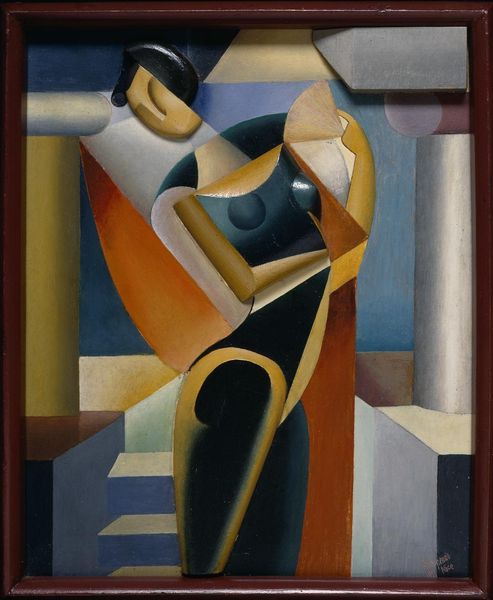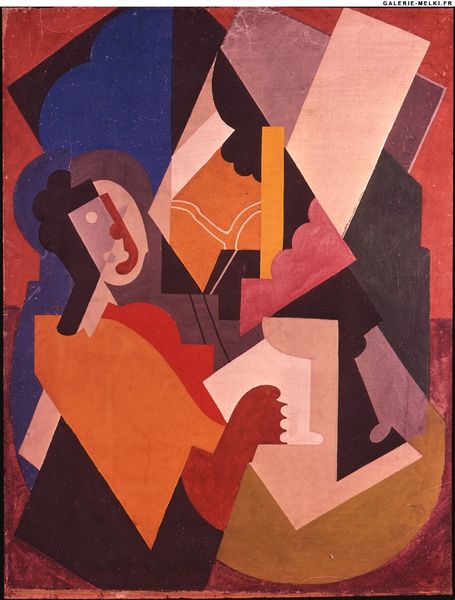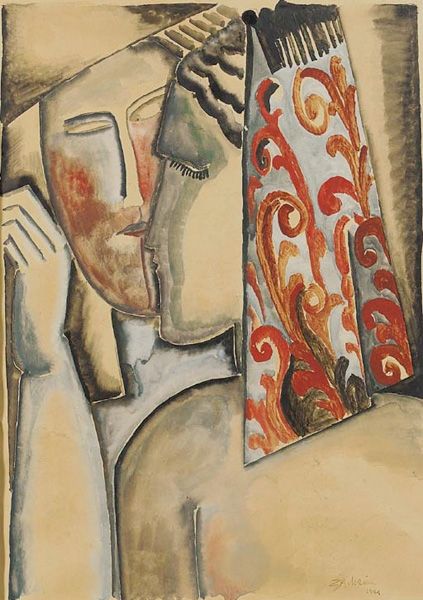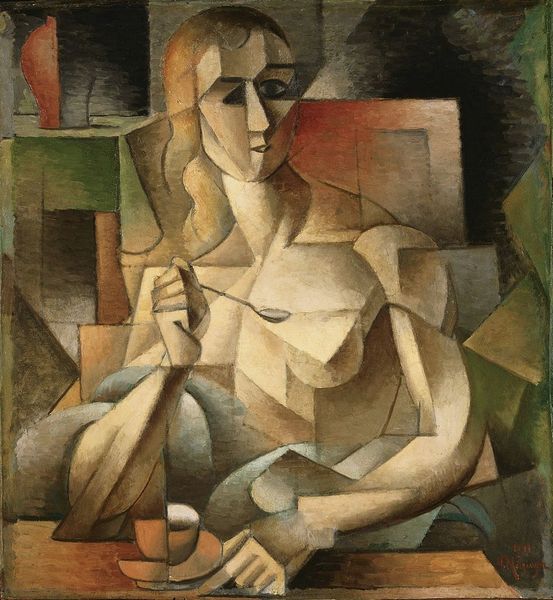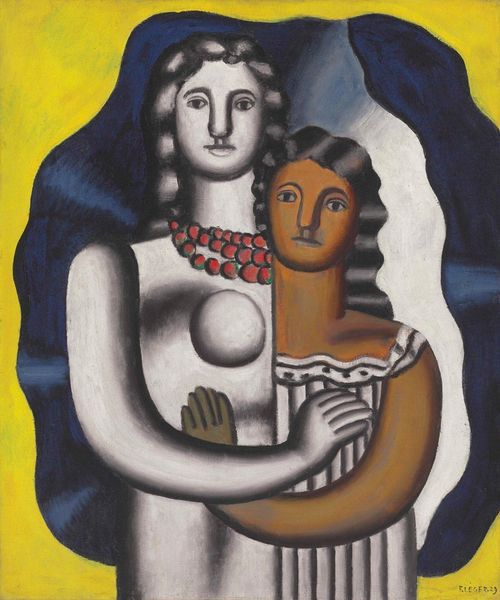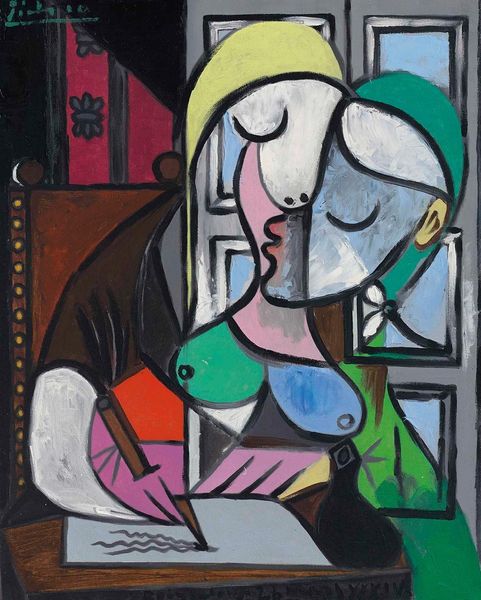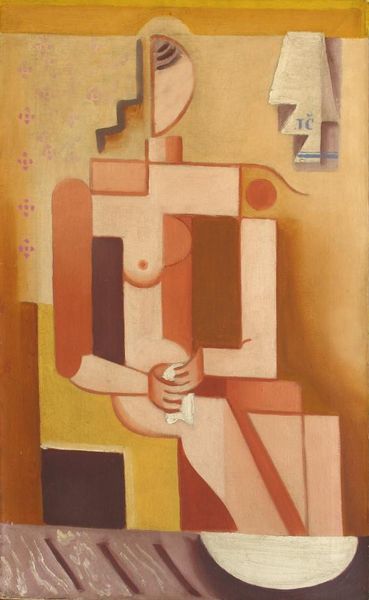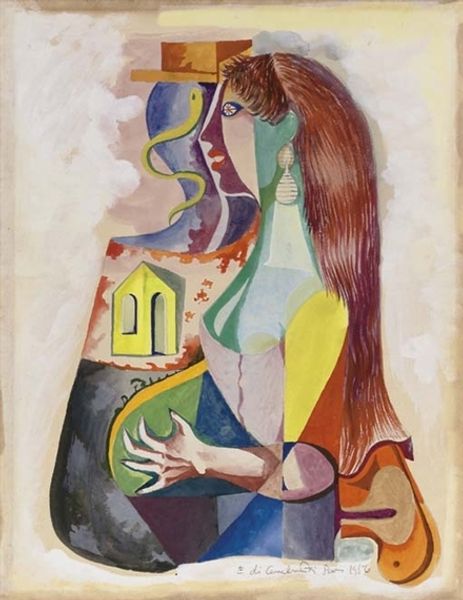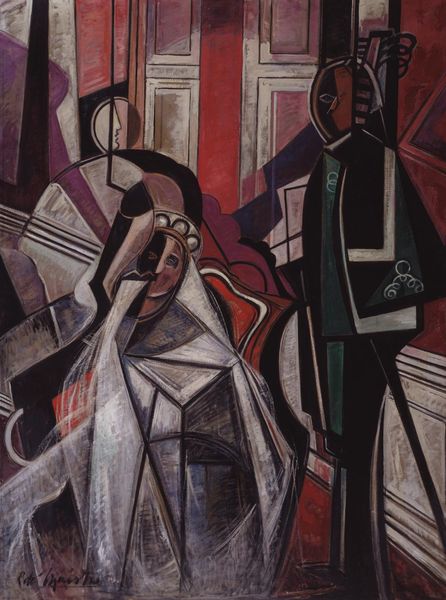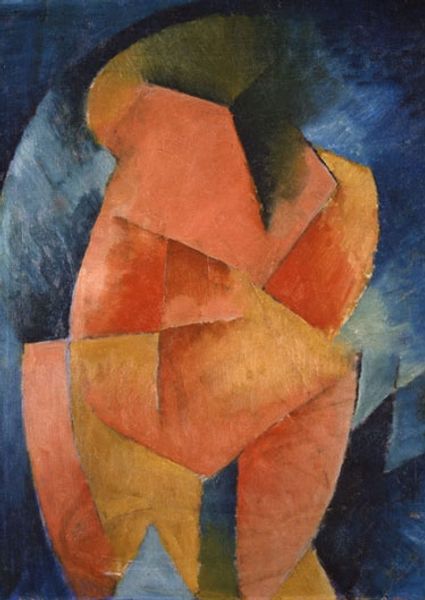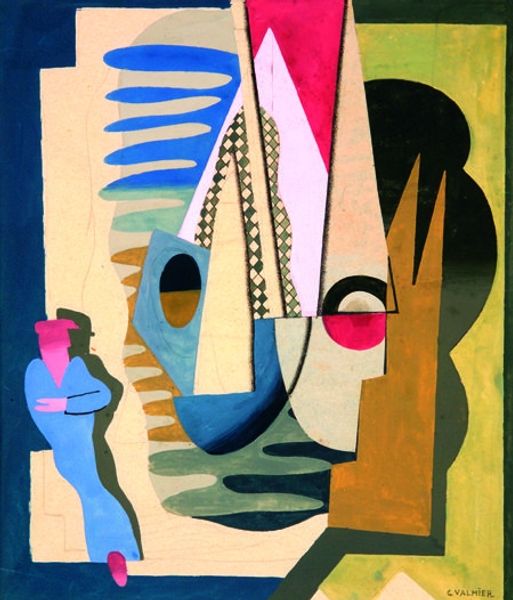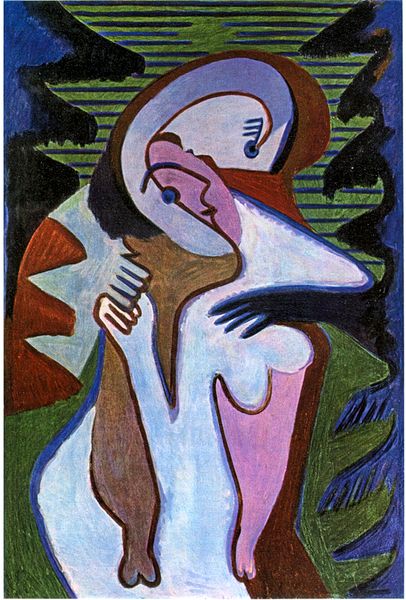
painting, oil-paint
#
portrait
#
cubism
#
painting
#
oil-paint
#
cityscape
#
modernism
Copyright: Public domain US
Editor: Here we have Jean Metzinger’s "Femme à la fenêtre, Maternité" from 1912, an oil painting on canvas. The geometric forms create a fractured yet cohesive image, with muted tones punctuated by bright accents, especially the woman’s red headband. It’s… surprisingly warm. What strikes you most about this painting? Curator: Well, let's consider the materials themselves: oil paint, canvas, and the pigments used to create these tones. How does their specific selection contribute to both the creation, but also the dissemination of ideas during this period? Cubism, with its fractured forms, wasn’t just about representing the world differently, but challenging the very means by which we perceive and consume it. Editor: So it’s not just the 'what' of the painting, but the 'how'? How it was made influences how we understand it? Curator: Exactly! And, the painting's title: “Woman at the Window, Maternity”. Notice the division of space, how she's confined yet looking outwards. How does this play into the social expectations of women, the constraints placed upon them by domestic labor? The materials used—oil paint particularly, its history of prestige—were tools that allowed these societal structures to be depicted, questioned, and perhaps, subverted, by creating artwork more available to a broader audience than sculpture, for example. Editor: I see! The means of production highlight the very social forces acting upon the subject. It brings another layer of interpretation, it feels very tangible and… connected. Curator: Precisely. Looking at the artwork with such attention for the material aspects provides a lens for deeper insights beyond pure aesthetics.
Comments
No comments
Be the first to comment and join the conversation on the ultimate creative platform.
